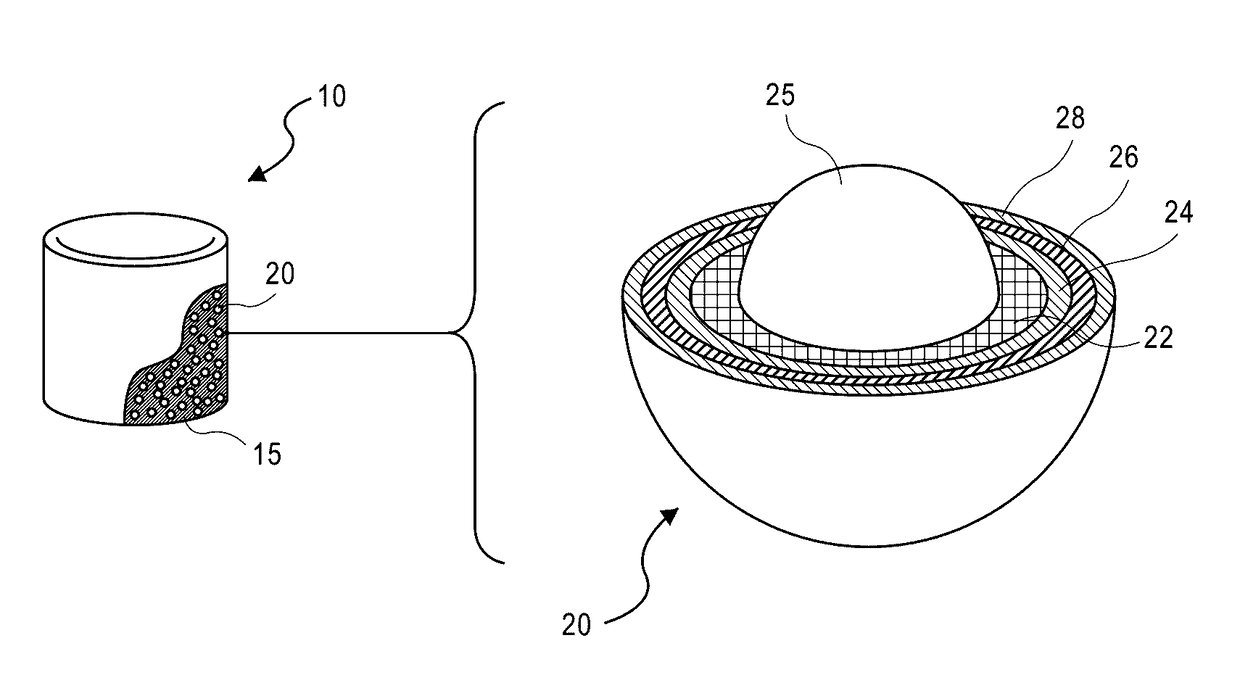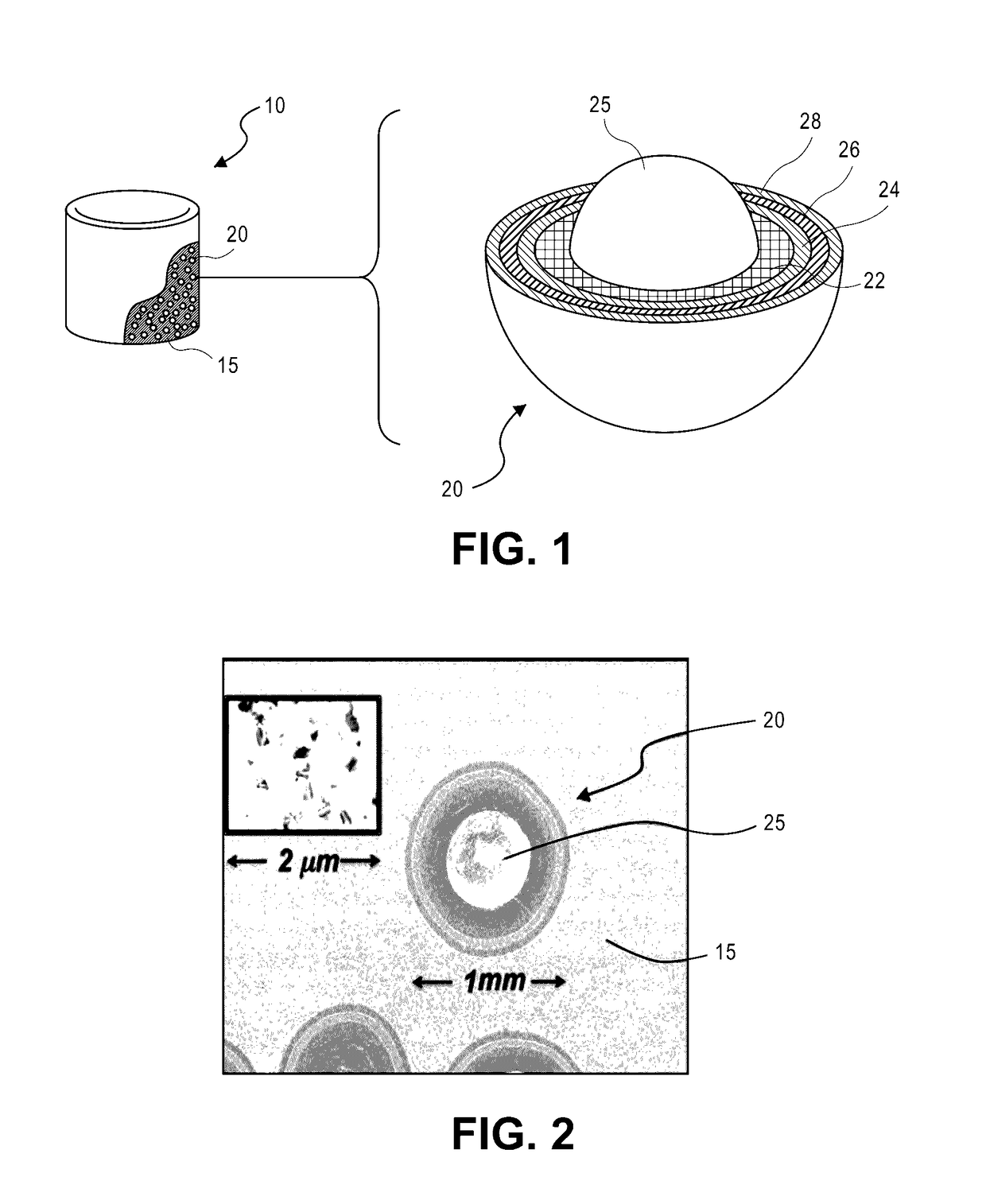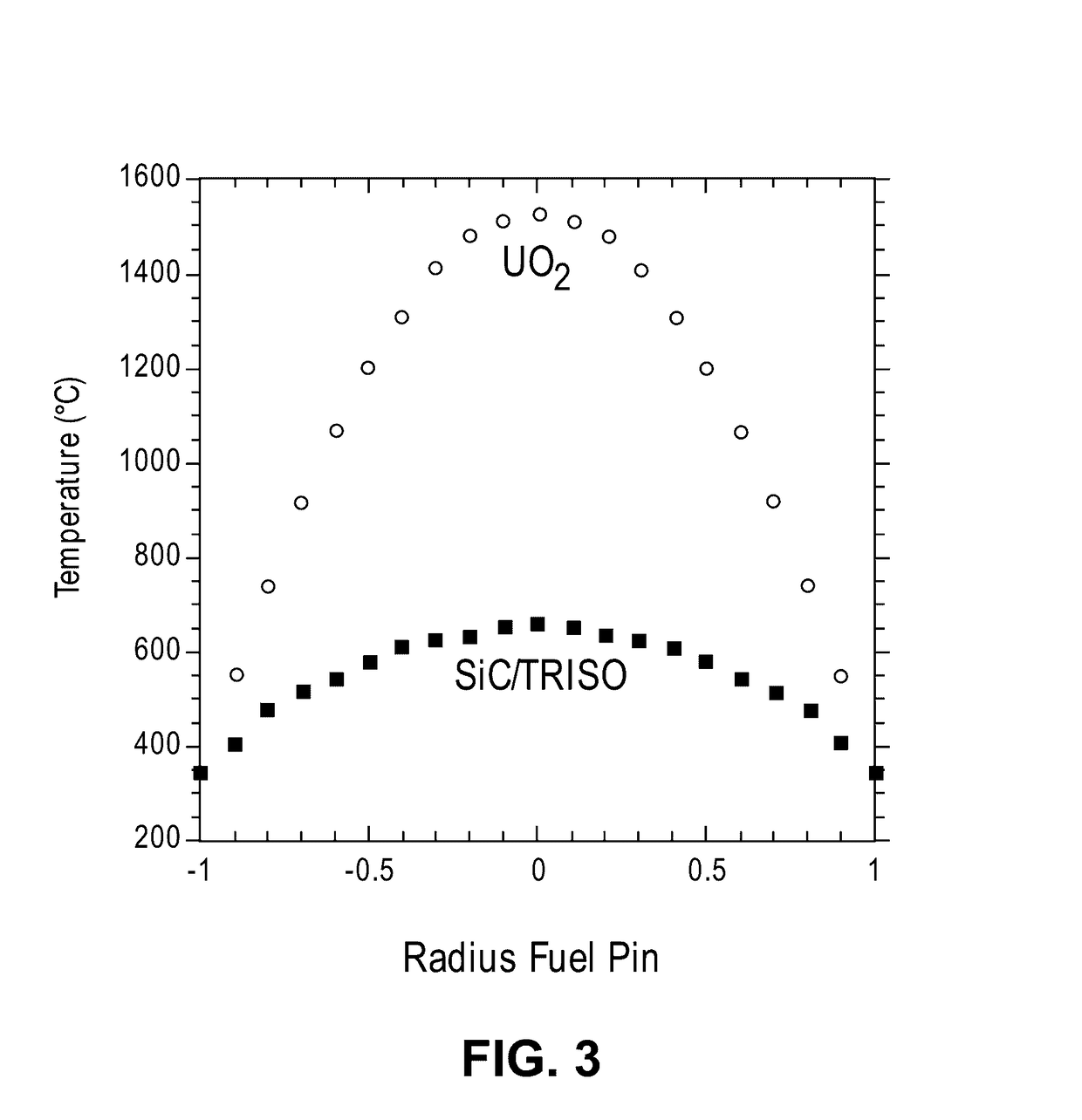Dispersion ceramic micro-encapsulated (DCM) nuclear fuel and related methods
a technology of nuclear fuel and ceramics, applied in the field of nuclear fuels, can solve the problems of fuel failure rather quickly and uncontrollable, damage to the reactor and the environment, lack of adequate cooling, etc., and achieve the effects of reducing the gap between pellets and clads, good radiation stability of dcm fuel, and high thermal conductivity
- Summary
- Abstract
- Description
- Claims
- Application Information
AI Technical Summary
Benefits of technology
Problems solved by technology
Method used
Image
Examples
Embodiment Construction
[0043]Reference will now be made in detail to the exemplary embodiments consistent with the present inventions, examples of which are illustrated in the accompanying drawings. Wherever possible, the same reference characters will be used throughout the drawings to refer to the same or like parts.
[0044]Dispersion fuels consist of a distribution of discrete fuel particles embedded in a non-fuel matrix. Ideally, the matrix remains largely not affected by neutron and fission fragment damage from the fission events that take place in the fuel particles.
[0045]The best composite fuel uses fully encapsulated coated fuel particles embedded in an inert heat-conductive matrix and surrounded by a metallic or ceramic clad. In a well-designed dispersion fuel, there are three very strong barriers to fission product release to the coolant. These are the coating around the particle, the dense matrix, and the cladding around the dispersion fuel block, each of them independently capable of containing ...
PUM
| Property | Measurement | Unit |
|---|---|---|
| sizes | aaaaa | aaaaa |
| height | aaaaa | aaaaa |
| radius | aaaaa | aaaaa |
Abstract
Description
Claims
Application Information
 Login to View More
Login to View More - R&D
- Intellectual Property
- Life Sciences
- Materials
- Tech Scout
- Unparalleled Data Quality
- Higher Quality Content
- 60% Fewer Hallucinations
Browse by: Latest US Patents, China's latest patents, Technical Efficacy Thesaurus, Application Domain, Technology Topic, Popular Technical Reports.
© 2025 PatSnap. All rights reserved.Legal|Privacy policy|Modern Slavery Act Transparency Statement|Sitemap|About US| Contact US: help@patsnap.com



